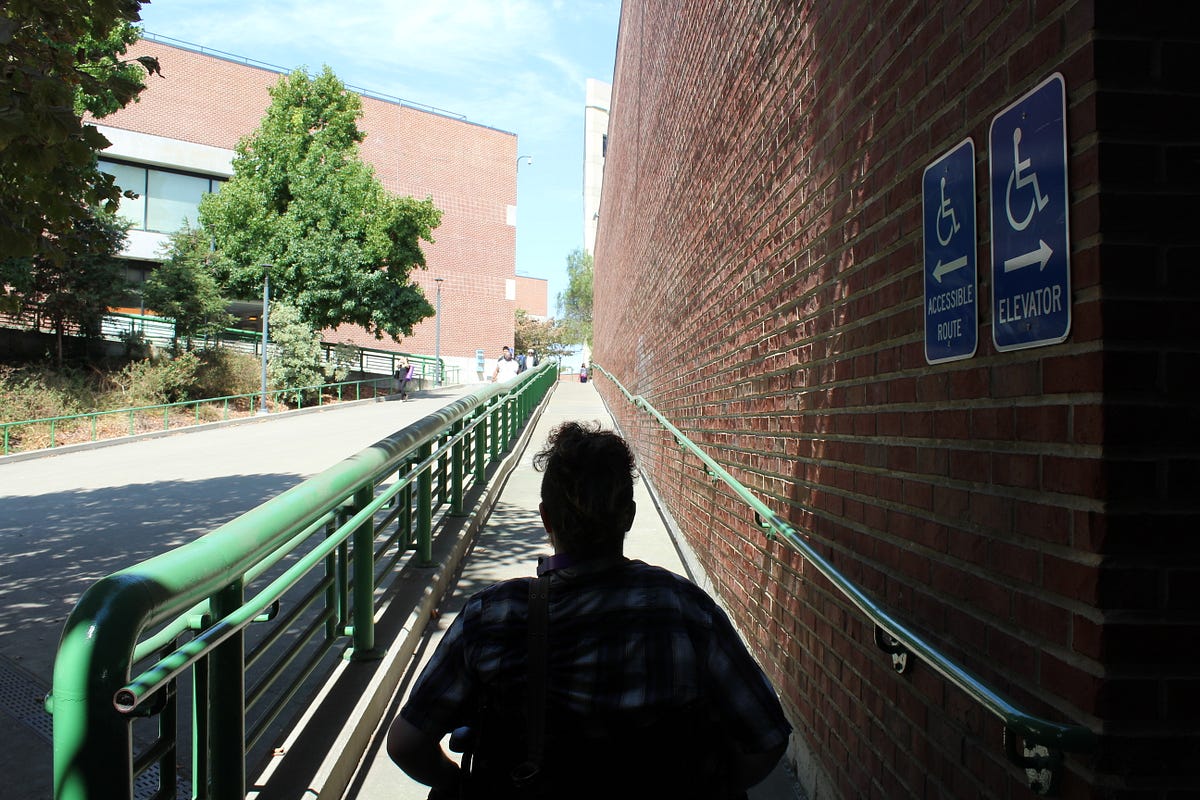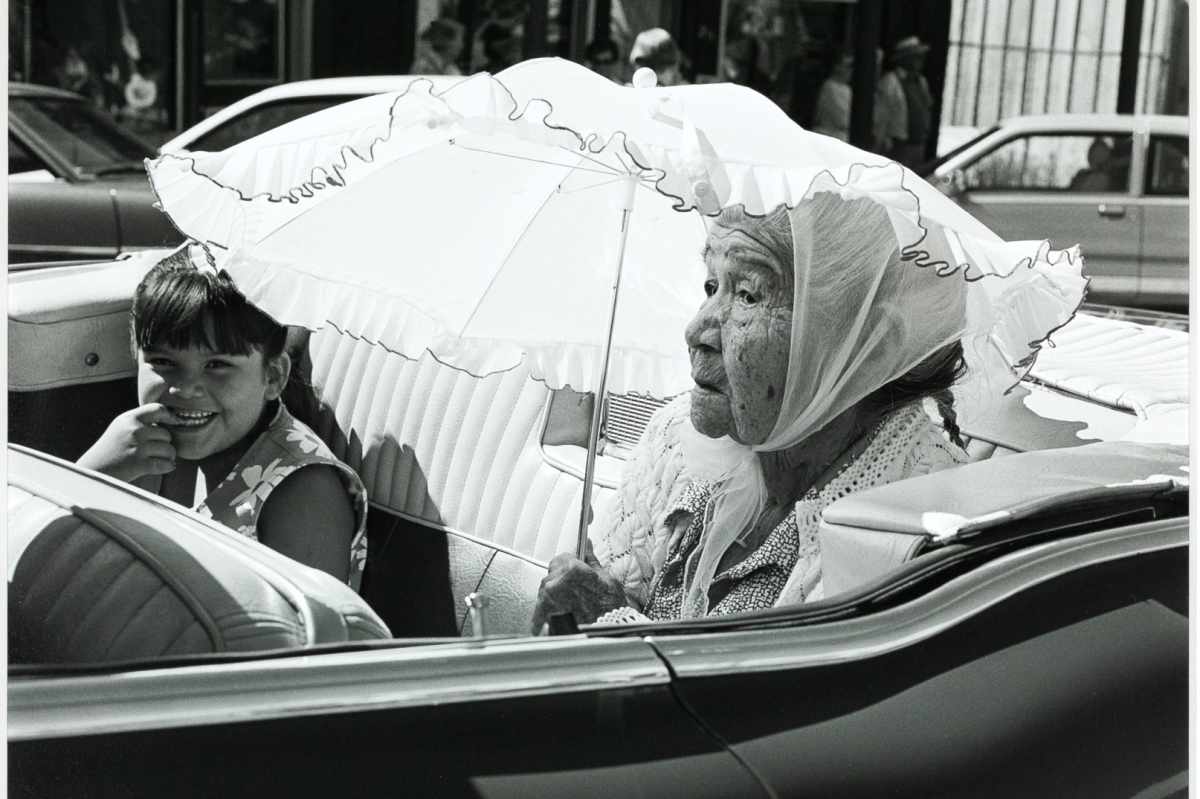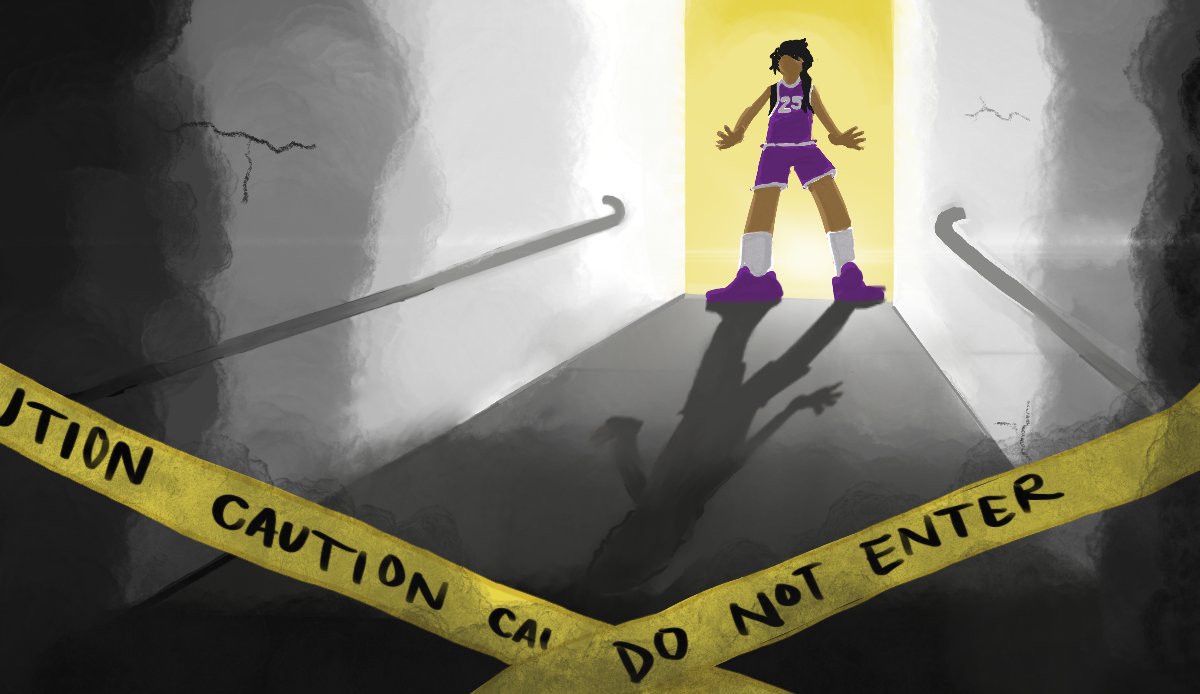
Most students at Laney will never experience campus as many of their classmates do: through the oft-harsh lens of accessibility — or a lack thereof.
By John Marshall
Famed Japanese architect Tadao Ando tells us that “the way people live can be directed by architecture.” It’s a quote that can be found on Laney College’s Architecture Department’s webpage.
For Laney student Gregory Lowrie, who uses a wheelchair, it sums up a frustrating Laney experience thus far.
Lowrie looks forward to where the long ramps on campus level off so he can catch his breath. It takes him about five minutes to wheel himself up one of them.
“This could happen to any Laney student,” he says, “no one is immune to injury.”
Lowrie found himself restricted to the wheelchair after a traumatic accident on Jan. 15, 2015, and is determined to make the long path to recovery, but sees Laney College as more of an obstacle than the encouraging experience he had hoped for.
“The world will always be more difficult to navigate for those with disabilities.”
— Meg Endy, Laney student
Laney opened its current campus in 1970, which was 20 years before Congress passed the Americans with Disabilities Act (ADA). The campus, with its brutalistic architecture, a style that consists of vast amounts of exposed concrete and brick, can be problematic for those with disabilities, and especially those who have to use a manual wheelchair.
The district spent $11 million over the past 10 years to keep up with ADA regulations, according to Vice Chancellor of General Services Sadiq Ikharo. Although the process of keeping up with regulations is ongoing, like improving signage and doorways, Ikharo claims that all of Laney has met ADA regulations.
Ikharo has previously detailed a facilities and technology master plan that the Peralta Board of Trustees approved on Sept. 12, 2017 after months of surveying and analysis. This will begin the process of an infrastructure overhaul on all four of Peralta’s campuses.
Architecture Department Chair Ron Betts would suggest a fresh start in a lot of areas. “If surveyed, you would find all kinds of areas that need improvement,” he said. Betts said the design of his building, paired with the ventilation system, acts like a vacuum sucking the main doors shut thus making them difficult to open.
“You have to ask questions like, ‘Does it meet the needs of all the students?’” said Betts.
(IN)ACCESSIBLE
Lowrie was riding his bike in downtown Oakland when he was blindsided and hit by a truck, sending him flying 30 feet.
As Murphy’s law dictates, what could have gone wrong did go wrong, and Lowrie landed directly on his head with no helmet to protect him. After suffering a traumatic brain injury, eight weeks in a coma, and a year restricted to his bed, Lowrie now uses a manual wheelchair to get around.

“I find it exhausting to traverse the Laney campus,” Lowrie said. “The occasional getting lost makes getting around discouraging, almost impossible.” That’s how he feels when he leaves his paratransit vehicle to tackle another day of academics at Laney.
“Laney should not expect its students to own an electric wheelchair,” Lowrie said, adding that there is a “lack of clear directions and readable maps.”
Putting aside the washed-out directory maps placed throughout campus, paper maps only show where disability parking is located, and do not show where there are ramp and elevator accessibility.
Lowrie’s suggestions to make the almost impossible more possible include providing better access to escorts, handing out handicapped-oriented maps, and having more handicapped accommodations in the classroom.
Lowrie has had a passion for cooking all his life and the hopeful 28-year-old believed that the Culinary Arts program would be wheelchair accessible when he signed up for a cooking class through the Disabled Students Program and Services (DSPS).

However, while in the kitchen, Lowrie found himself making three-point turns, squeezing by tables and ovens, and he realized that he would not be able to use the countertops that came up to his chest while in his wheelchair.
In response to the incident, the Dean of Career and Technical Education Peter Crabtree, who oversees the Culinary Arts program, said that “all the equipment is standard and it would be theoretically possible for a section of the kitchen to meet the needs of those in a wheelchair.”
The complexities of the kitchen, like a fire suppression system, make it difficult to make those accommodations. “The responsibility lays on DSPS to find a way to accommodate,” Crabtree said.
A PERSISTENT PROBLEM
DSPS counselors try to do all they can for disabled students but can’t guarantee that there will be accommodations in place to meet their needs. “Greg is not the only person and that is not the only department where students face obstacles,” Miriam Zamora-Kantor, a DSPS counselor, said.
One of the students she had previously counseled could not attend her theatre class after the one elevator to access the class went out of service, forcing the teacher to find other means to get her the material outside of the classroom.
Another Laney Student, Meg Endy, feels angry whenever she is on campus. Endy, who is also restricted to a manual wheelchair, has had a positive experience with DSPS but feels that Laney doesn’t strive to make the accommodations for someone with her disability.
“This is an institutional problem that requires institutional solutions.”
— Kevin Wade, Laney student services dean
“My main issue are the ramps,” Endy said. At times, she has to stop herself from rolling back by grabbing on to the railings.
Endy also feels excluded from being able to participate in her Chinese Character class because the aisles are too narrow and she is unable to get to the whiteboard or hand in assignments without the help of other students.
“This is an institutional problem that requires institutional solutions,” Laney Student Services Dean Kevin Wade said.
“We should have these accommodations in place,” he said, but added that “things take money and time but I ask myself ‘what can we be doing now to provide a holistic experience’?”
Some of the short-term goals that Wade has in the works are to improve signage on campus and update desks that lift up and down. Asked how confident he was that the department had accommodations in place, he said he’s “almost certain we’ll need some work. That is a question I’ll bring up to my colleagues challenging them to find integral planning.”
However, the issue of accommodations persists. “The world will always be more difficult to navigate for those with disabilities,” Endy stated.
John Marshall is a Tower Staff Writer. Email him at jtmarshallmc92(at)gmail.com.

























